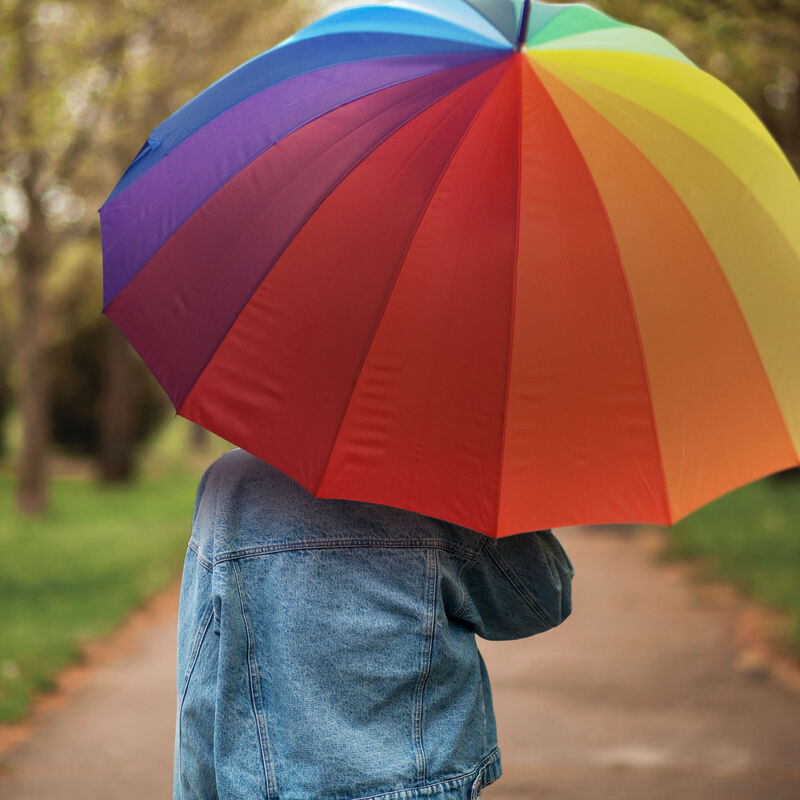The Ultimate Guide to Umbrellas
When it comes to rain or shine, there is one accessory that has stood the test of time: the umbrella. From classic black to funky patterns, umbrellas have become a staple in our daily lives, keeping us dry and stylish at the same time. But have you ever wondered about the history of this ubiquitous accessory? Or the different types of umbrellas available in the market? This ultimate guide to umbrellas will answer all your questions and more.
Let's start with the basics. The word "umbrella" comes from the Latin word "umbra," which means shade or shadow. The first known umbrellas were used in ancient civilizations such as Egypt, Assyria, and China. These early umbrellas were made of leaves, feathers, or silk and were used to protect from the sun, not rain. It wasn't until the 16th century in Europe that umbrellas became popular as rain protection.
Today, there are two main types of umbrellas: compact and full-size. Compact umbrellas are perfect for on-the-go and can easily fit in a purse or backpack. They usually have a diameter of 30-36 inches when opened and come in various designs and colors. Full-size umbrellas, on the other hand, are larger and more durable. They have a diameter of 40-50 inches when opened and are ideal for heavy rain or wind.
Apart from the size, umbrellas can also vary in their design and functionality. For example, the automatic umbrella has a spring-loaded mechanism that opens and closes with the push of a button. The manual umbrella, on the other hand, requires manual effort to open and close. There are also golf umbrellas that are larger than full-size umbrellas and are perfect for golfers or those who want extra coverage. And let's not forget about the kid's umbrellas that come in cute and fun designs like animals, cartoons, or superheroes.
Another important factor to consider when purchasing an umbrella is its canopy material. The canopy is the fabric that covers the umbrella and protects you from the rain. The most common materials used for the canopy are polyester, nylon, and Pongee. Polyester is the most affordable option but is not very durable. Nylon is more durable than polyester and is also lightweight. Pongee is a high-quality material that is resistant to water and UV rays.
When it comes to taking care of your umbrella, it's important to remember to always let it dry fully before closing it. This will prevent mold and mildew from forming. If your umbrella does get wet, make sure to open it and let it dry in a well-ventilated area. You can also clean your umbrella with a damp cloth and mild soap. Avoid using abrasive cleaners or brushes as they can damage the canopy. And if your umbrella has a wooden handle, make sure to treat it with a wood conditioner to keep it from cracking.
Now that you know all about umbrellas, you might be wondering what the future holds for this trusty accessory. Well, in recent years, there have been some exciting developments in umbrella technology. For example, there are now umbrellas with built-in LED lights that provide additional visibility in the dark. There are also umbrellas that come with a phone charger, so you never have to worry about your phone running out of battery in the rain. And for those who want to be environmentally conscious, there are eco-friendly umbrellas made from recycled materials.
In conclusion, umbrellas have come a long way from their humble beginnings as sunshades in ancient civilizations. Today, they are a practical and stylish accessory that can protect us from the rain and add a pop of color to our outfits. Whether you prefer a compact or full-size umbrella, there is an umbrella out there for everyone. So the next time you're caught in the rain, you can confidently whip out your trusty umbrella and stay dry in style.
Labels: Interesting, lifestyle, LifeTips, Technology


0 Comments:
Post a Comment
Subscribe to Post Comments [Atom]
<< Home